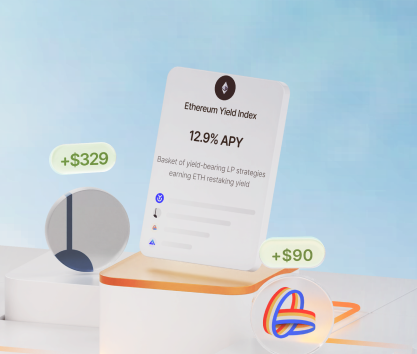The DeFi ecosystem thrives on innovation and community engagement. When Ethereum arrived in the world of crypto, it was a massive event with many developers quickly realizing that it is quite easy to build on this blockchain and achieve excellent results. If you are interested in deploying a decentralized app, you must be prepared to learn new skills and spend a lot of time stress-testing your code.
Yield farming development process
There are some prerequisites for an aspiring developer who wants to build Dapps. We will mostly talk about Ethereum as it is the biggest digital ecosystem with many educational sources to get on board as quickly as possible. Note that the confines of a single article are naturally too tight to provide a meaningful explanation of how to build a Dapp in detail. However, we will cover the most important basics such as which skills you need to pick up, instruments to use, and examples to vivisect.
First and foremost, you cannot start with a blank slate. Below are some important things that you must know before attempting to create your first decentralized application (dApp):
- At least basic coding skills. It is important to use Solidity efficiently. This language is statical and fully compatible with Ethereum Virtual Machine (EVM). The script is reminiscent of ECMA (JScript, ActionScript, JavaScript) and uses similar syntax. Having experience with similar languages is incredibly important and allows newcomers to quickly get on board.
- GitHub experience. When trying to build something unique, you will have to refer to projects that have been successfully implemented before. Some of the best examples of functional code are publicly available as GitHub repositories. For example, you can find a large chunk of the code that powers UniSwap, the biggest DEX on Ethereum.
- The general knowledge of development frameworks. Most of them look and function similarly offering some core features to developers interested in streamlining their coding efforts to quickly design applications. Truffle, Hardhat, Corda, and Hyperledger are all useful frameworks that have a ton of plugins and add-ons. For instance, Hardhat has the Hardhat-Verify plugin from Nomic Foundation that verifies the integrity and correctness of smart contracts.
These skills are essential and will be a great help if you are determined to build on Ethereum or any other blockchain for that matter. You can get started without this valuable knowledge but you will have to pick it up eventually.
Smart contract development
The whole DeFi ecosystem is built using smart contracts. They represent the bulk of functionality available to users of protocols and allow them to operate in a trustless and permissionless environment. Creating a functional smart contract without compromising security and ensuring good performance is quite difficult.
To create a smart contract, you will need to use the Solidity programming language that was designed specifically for that purpose. To simplify the process, it is necessary to use development frameworks that have the necessary features to immediately deploy contracts on test nets, verify their integrity, and add new features without writing code from scratch.
Below are the three most popular frameworks for EVM:
- Truffle is an end-to-end development environment that allows users to quickly build contracts and simulate their operations on local blockchains that do not have to be connected to the internet. The Ganache is a copy of Ethereum’s architecture deployable locally. The in-built debugger is an excellent tool for developers as it helps clean up the code and deliver a stable performance without the need to use external instruments. Many users are using Truffle due to its UX-centered design that makes the development process faster and more convenient.
- Hardhat may be the best option for newcomers who lack the experience and confidence to rely on their knowledge of blockchain. Hardhat offers multiple tools that simplify the development and deployment process. For instance, Hardhad Ignition is a special system that streamlines the smart contract deployment process for users who do not understand it fully. You can also use the VSCode tool to make Solidity operational in the Visual Studio Code application. It is a great feature for users who have experience with VSC and believe that it is the most convenient instrument for coding.
- Foundry is another useful tool that can be used to build all sorts of apps using Ethereum’s native Solidity. The framework is written in Rust. The best thing about this particular framework is that it streamlines the development process and allows users to use various presets and templates accessible as GitHub repositories. The community is very active. Users regularly update the book on GitHub which offers a wide range of interesting features and code packages that can be effortlessly inserted into any project. A great advantage is the variety of testing tools that allow developers to use Fuzz, Invariant, Differential, and Fork testing without any hassles.
Deploying on the Ethereum blockchain
Hardhat is the simplest way to deploy a smart contract using the declarative approach that allows developers to define instances where contracts can be deployed and operations that are allowed to be performed. Since the Ignition tool can take over the development and deployment, you can focus on polishing the project and ensuring that it works as intended.
Here are some ways to use Ignition:
- Governance tokens are created using standard modules. You will need to import the BuildModule by using the @nomicfoundation/hardhat-ignition/modules function in the frameworks console. The module can be called however you like. You can deploy a new instance by using the m.contract function. Alternatively, you can use the same function to use an existing token by providing the unique address of an existing code package.
- Recurring upgrades are possible with this framework thanks to the feature that allows you to build upgradeable contracts. Hardhat uses OpenZeppelin contracts which can be installed from respective repositories. Users are allowed to create proxy contracts that will be used to upgrade existing code when necessary. It is a great way to design and deploy smart contracts that require additional tinkering if the ecosystem itself experiences change. For instance, you can create automated market makers that will be adjusted in real time to fit the current market circumstances better.
Note that you should use test nets and local blockchains to test the functionality of smart contracts and verify their integrity. It may take several days of trial and error until you arrive at a solution that works as intended and delivers an acceptable level of user experience.
Web 3.0 development tips
Even experienced coders will face some challenges if they ignore the vast ocean of accumulated knowledge in the world of DeFi. There are several important habits that developers must form to become successful:
- Do not feel shame for stealing code. Many open-source projects are public and do not have restrictive licensing requirements. For instance, PancakeSwap is a glorified clone of UniSwap. In fact, you can find the remnants of UniSwap code with comments from original developers in the core code of PancakeSwap. While we do not encourage simple copy-pasting, reusing already efficient solutions is a good practice.
- Understand the limits of blockchain technology. Many developers think that building for blockchain is the same as creating random applications. However, each blockchain architecture has its own restrictions and capacities that must be accounted for during the development process. You can make a lot of things in Solidity but deploying them on the chain is a different story.
- You will have to create multiple instances of smart contracts. The best way to create a yield farming project is to replicate the code and many features employed by PancakeSwap. It added the reward system and expanded the functionality of publicly available UniSwap V2. Copying the PancakeSwap code and running it locally can be a great educational experience.
Testing liquidity pools is quite important as well as checking their robustness against exploits and various types of user abuse. The Truffle framework offers you a wide range of tools to conduct a plethora of tests. For example, you can impersonate accounts, turn on auto-mining, and customize local blockchains to simulate the live environment. Equipped with testing tools from Truffle and Hardhat, developers can ensure that their pools operate as intended and do not have any glaring weaknesses and vulnerabilities.
Useful educational materials
There is an ongoing joke among programmers that there is no better expert than Google. In the vast majority of cases, you won’t be digging into a paper book to find an answer to an issue. The first instinct of any developer is to surf the internet and look who else has dealt with the problem they are having. Over the years, many languages and frameworks grew a thick layer of educational resources that provide immediate solutions to many common problems.
If you are new to the idea of blockchain development, there are several incredibly useful websites that you can use to deepen your knowledge and put a couple of bookmarks for future use:
- Cryptozombies is the best destination for complete newbies who are interested in building applications. The website guides you through the process of making an NFT-based game called Zombie Factory. The course has everything you need to learn how to create a functional Dapp and equip it with smart contracts. You can also learn more about building decentralized oracles, deploying apps on Optimism and Tron, or simply focus on features that are advanced in nature to grasp some important concepts like building an oracle from scratch, testing contracts with Truffle tools, and more.
- Bitdegree is another educational platform that has a variety of useful courses. The interactive portion of the website is about building a Space Doggo project. If you do not have any prior experience in coding, this website will be invaluable thanks to its extensive materials teaching you how to code in Solidity, write basic and advanced smart contracts, or build a full-featured blockchain app. To get started, you will need a computer with any popular OS and a stable internet connection. Many professional coders used this platform to transition from JScript, Java, and C++ to Solidity.
- Ethereumbook on GitHub is a massive source of examples, functional scripts, and lots of useful templates that you can use just to get some practice or even inject into your custom code. Note that the book covers only foundational aspects of development and does not provide sufficiently engaging practical components that teach you how to do stuff. However, the theoretical portion is very solid and provides excellent education to newcomers.









